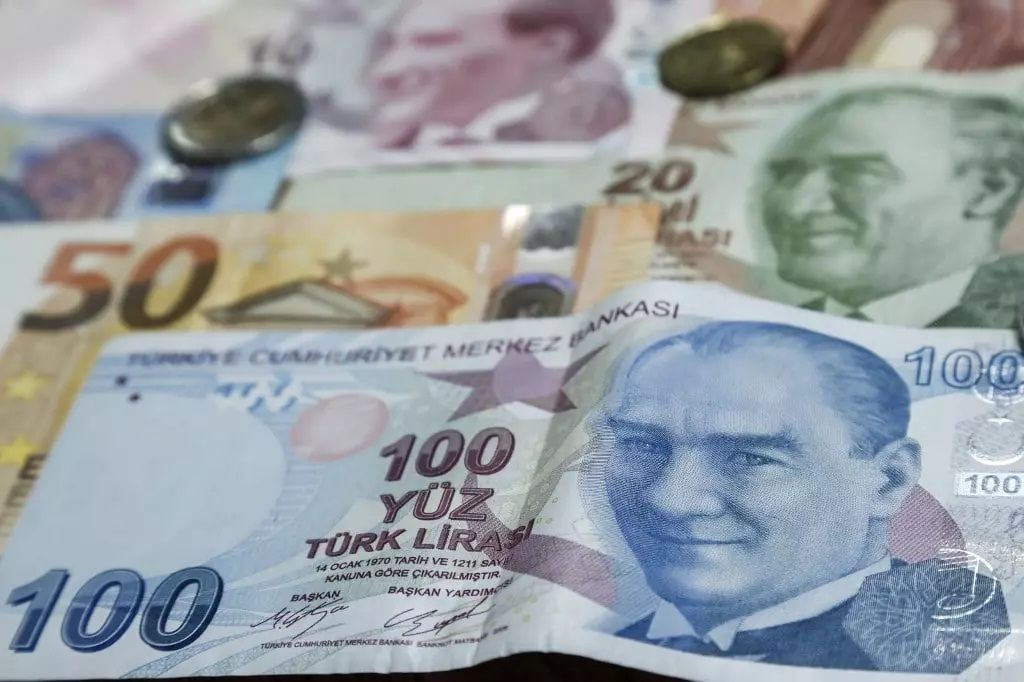FXOpen

The economy of Turkey has been in the spotlight for a few years now.
On one hand, Turkey is a highly industrialised nation with a large population with a very strong work ethic, and which bridges the gap between Europe and the Middle East economically and culturally. This combination is a great advantage to Turkey.
On the other hand, Turkey's national currency, the Lira, has been depreciating rapidly in value for over a year, and inflation is at seriously concerning highs.
Turkey's government decided not to participate in restrictions as draconian as its European and Middle Eastern neighbours over the past two years. Instead the country welcomed tourists and attempted to keep its industrial sector going as best possible. Now that the mantra has moved on, and other countries in the Western world are concentrating on very comprehensive sanctions against pretty much everything and everyone from Russia, Turkey has been less draconian and a quick visit to Istanbul or Antalya will show that thousands of people from Russia are enjoying some relaxing time out in Turkey's favourite tourism spots.
Turkey is relatively unique in its region. It has a very developed engineering and manufacturing industry and makes everything from cars to washing machines; has a diversified and well regulated financial markets industry, and exports a wide range of products across the world at reasonable and very competitive prices. It is friendly to almost all nations, and has the advantage of cost-efficiency on its side.
Turkey's labour, real estate and resource costs are a fraction of those in neighbouring European nations, yet its productivity is higher than some.
The country's tourist sector, which attracts over 40 million people to the country each year (as of 2014 official figures) is the icing on the cake.
So, when looking at Turkey's remarkable progress in commerce over recent years, it would be easy to think that it could be one of the next successful emerging markets like Brazil, Mexico or India.
However, the Lira has been depreciating so fast that it has been of great concern to Tier 1 banks, analysts and traders alike.
The Turkish economy is now struggling to come to terms with a staggering 54.4% year-over-year (YoY) inflation, the highest in 20 years. The Turkish central bank estimates that inflation will only be 23.2% YoY by year-end, but that estimation was made assuming the price of crude oil would be around $80 per barrel.
Over the last five years, the lira has lost 75.57% of its value against the US dollar, and this week, the currency markets begin with yet another downward direction for the Lira as the US Dollar suddenly gained even more ground against it in the early hours of this morning's European opening, where it went from 14.69 to 14.71 against the Dollar, showing a sudden spike on the graph.
As the Lira continues to plummet, the Turkish economy becomes ever more diversified, therefore an interesting area to analyse would be how much longer the country can continue to modernise and improve its already very diverse and multi-faceted economy with a depreciating sovereign currency overshadowing it.
No government official has made any statement regarding trying to break the downward spiral, however it may have to be done in the end.
This article represents the opinion of the Companies operating under the FXOpen brand only. It is not to be construed as an offer, solicitation, or recommendation with respect to products and services provided by the Companies operating under the FXOpen brand, nor is it to be considered financial advice.
Stay ahead of the market!
Subscribe now to our mailing list and receive the latest market news and insights delivered directly to your inbox.








